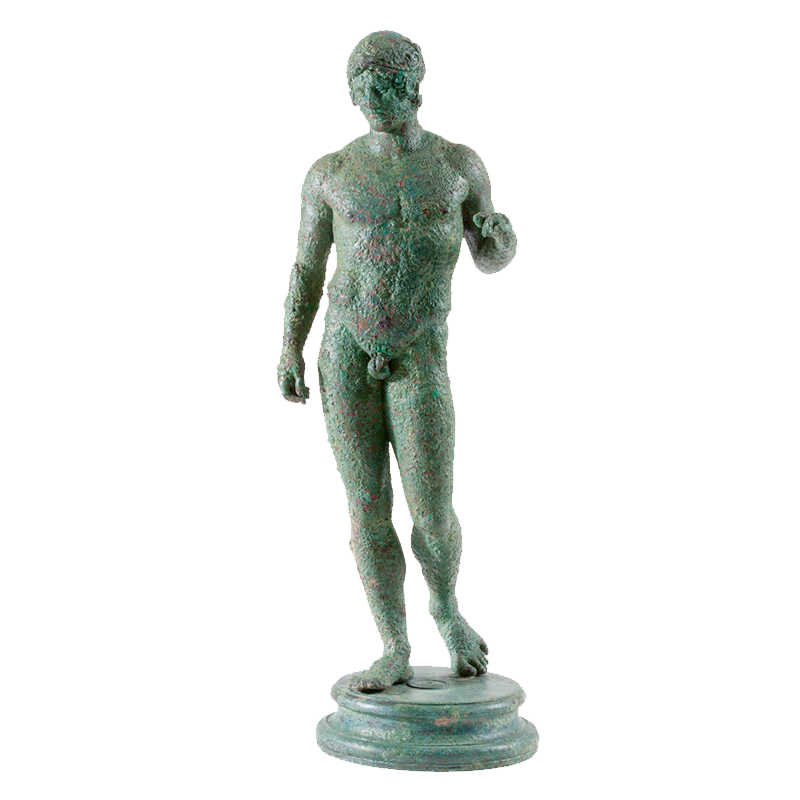Doryphoros

Bronze statuette of a naked helmeted young man, on a circular base.
From Ampelokipoi in Athens. Early Imperial times.
Athens, National Archaeological Museum Χ 16785.
© Hellenic Ministry of Culture and Sports/National Archaeological Museum/H.O.C.RE. D. Photograph: Eleftherios Galanopoulos.
Bronze statuette representing a naked young man.
The naked male figure is presented here in perfect shape. The young man rests on his right leg, while the left is pulled backward on the tips of its toes. The posture of the male figure and the depiction of the toned and robust body echo the sculpture Doryphoros by renowned 5th century BC sculptor Polykleitos.
Famous for its harmony, symmetry, and perfection of proportions, the sculpture became—both for Polykleitos’ contemporaries and for later artists—a model for the exemplary representation of the human form and for later depictions of the human body. It is considered the predominant reference point in ancient Greek sculpting and was appropriately named ΚΑΝΩΝ (or “Canon,” translated as “measure” or “rule”).
Clay red-figure amphora from the Classical Period, with a representation of Achilles.
The vase depicts the most important hero of the Trojan War, Achilles.
His posture is almost statuesque. The robust physique, the bare muscular legs, and the finesse in the rendering of the face and the hairstyle expresses vigor and majesty combined with inner peace and grace.
The representation of Achilles’ body primarily follows the principles set by Polykleitos in his sculpture entitled “Doryphoros.”
From Vulci. Ca 445/440 BC. Vatican Museums, Museo Gregoriano Etrusco 16571.
© Musei Vaticani – Museo Gregoriano Etrusco.
SEARCH & LEARN
1. Look for information about one of the leading sculptors of antiquity, Polykleitos.
2. Discover why Polykleitos’ “Doryphoros” came to be known as CANON.
3. Learn the Greek etymologies of the following words: αρμονία (harmony), συμμετρία (symmetry), and αρτιμέλεια (able-bodied).
TOPICS FOR DISCUSSION
1. Do you believe that Doryphoros’ proportions apply to all human types, in all cultures of the world?
2. In cinema, fashion, and magazines, we used to see certain standards being projected and dominating. Today, this is changing. Discuss the reasons why this is happening.
